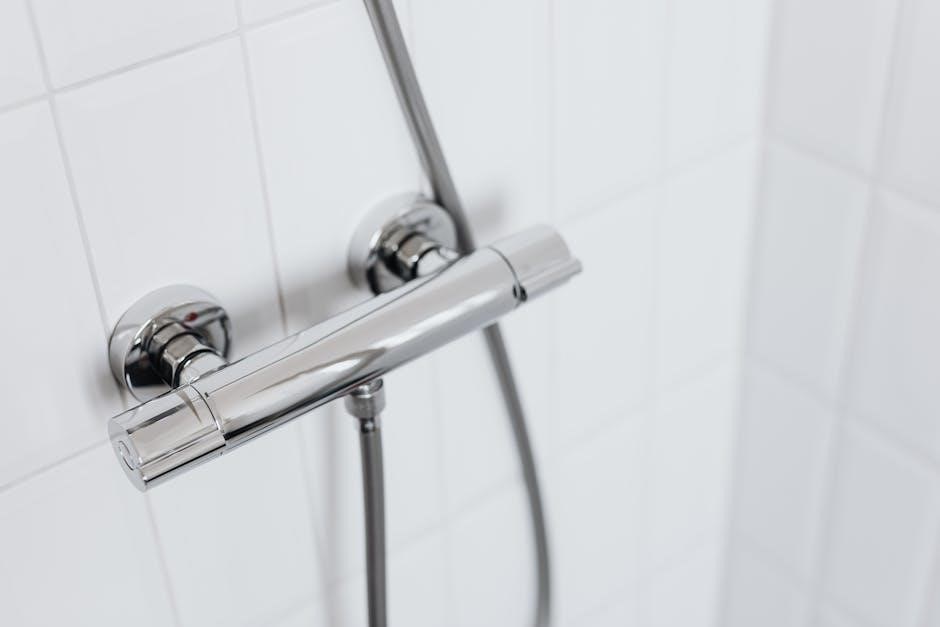A stainless steel pipe schedule chart is a comprehensive guide detailing pipe dimensions, wall thicknesses, and weights. It includes nominal pipe size, outside diameter, and wall thickness for various schedules, ensuring precise engineering and installation. These charts are essential for selecting the right pipe for specific applications, adhering to industry standards like ANSI B36.19 and ASTM A312.
1.1 What is a Stainless Steel Pipe Schedule Chart?
A Stainless Steel Pipe Schedule Chart is a detailed table that lists pipe dimensions, including nominal pipe size, outside diameter, wall thickness, and weight per unit length. It organizes pipes by schedules, which define wall thickness in relation to pipe size. The chart adheres to industry standards like ANSI B36.19 and ASTM A312, ensuring consistency and reliability. Engineers and fabricators use these charts to select the appropriate pipe for specific applications, considering factors like pressure, temperature, and corrosion resistance. They are essential for accurate piping system design and installation.
1.2 Importance of Understanding Pipe Schedules
Understanding pipe schedules is critical for selecting the right piping components for industrial applications. Pipe schedules determine the wall thickness, which directly impacts the pipe’s strength, durability, and resistance to pressure and corrosion. Incorrectly choosing a schedule can lead to system failures, safety risks, or increased maintenance costs. Accurate knowledge ensures compliance with industry standards, optimizes system performance, and extends the lifespan of piping systems. It is essential for engineers to reference stainless steel pipe schedule charts to make informed decisions.
1.3 Applications of Stainless Steel Pipe Schedule Charts
Stainless steel pipe schedule charts are widely used in various industries to ensure accurate pipe sizing and specifications. They are instrumental in construction, marine, food processing, and chemical plants, where corrosion resistance is vital. These charts assist in engineering projects, enabling precise selection of pipes for high-pressure systems, HVAC, and plumbing. They also aid in procurement by providing exact dimensions for ordering. Their applications extend to quality control, ensuring compliance with industry standards and material specifications, making them an indispensable tool across multiple sectors.
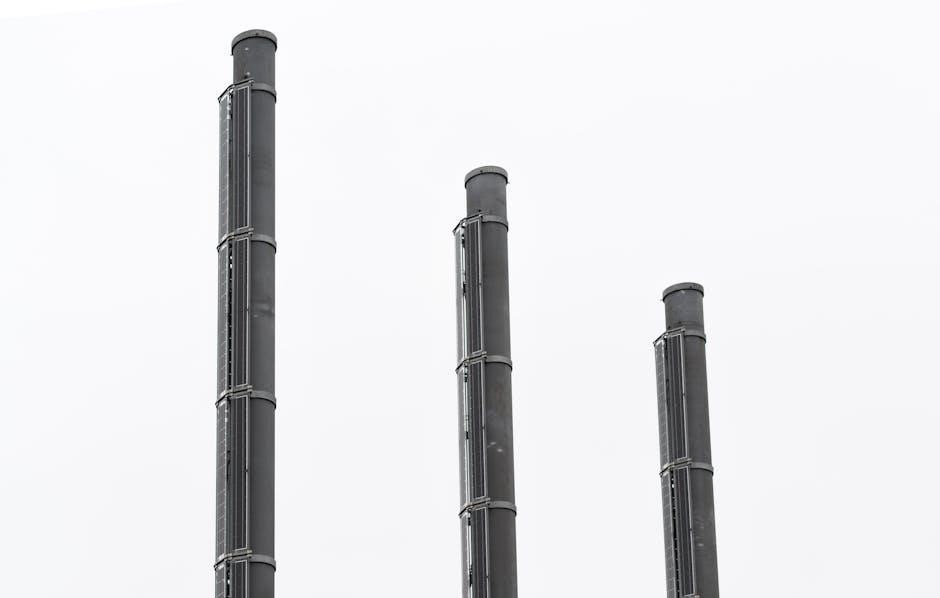
Key Elements of Stainless Steel Pipe Schedule Charts
Stainless steel pipe schedule charts outline nominal pipe size (NPS), wall thickness, outside diameter (OD), inside diameter (ID), weight per unit length, and tolerances for precise pipe specifications.
2.1 Nominal Pipe Size (NPS)
Nominal Pipe Size (NPS) is a standardized identifier for pipe sizes, not the actual outside diameter. It ranges from 1/8 to 80 inches, ensuring consistency across materials. NPS aligns with international standards like ANSI B36.19 for stainless steel pipes, providing uniformity in specifications. This system simplifies pipe selection, fabrication, and installation; Each NPS corresponds to specific dimensions, enabling engineers to quickly identify compatible components for their projects. This consistency is crucial for maintaining system integrity and performance.
2.2 Schedule Number (Wall Thickness)
The Schedule Number indicates the wall thickness of a stainless steel pipe, crucial for determining its strength and pressure resistance. Common schedules include 10S, 40S, and 80S, with higher numbers denoting thicker walls. These values are standardized in charts and specifications like ANSI B36.19, ensuring consistency across manufacturers. The schedule number is essential for engineering calculations, especially in high-pressure or corrosive environments. Thicker walls enhance durability but increase weight and cost, making proper selection vital for optimal performance and efficiency.
2.3 Outside Diameter (OD)
The Outside Diameter (OD) of a stainless steel pipe is its external dimension, measured across the pipe’s outer surface. OD remains consistent across different schedules for a given nominal pipe size, ensuring compatibility with fittings and connectors. Charts and specifications like ANSI B36.19 provide precise OD values in inches and millimeters, critical for accurate system design and installation. This consistency simplifies component interchangeability, making OD a key reference for engineers and fabricators in various industries, from food processing to marine applications.
2.4 Inside Diameter (ID)
The Inside Diameter (ID) of a stainless steel pipe is the internal measurement, crucial for determining fluid flow capacity. Unlike the Outside Diameter, ID varies with the schedule number, increasing as wall thickness decreases. Schedule charts provide precise ID values for each pipe size and schedule, ensuring accurate calculations for pressure drop and flow rates. This data is vital for system design, especially in high-precision industries like chemical processing and HVAC systems, where fluid dynamics are critical for optimal performance and efficiency.
2.5 Wall Thickness Tolerances
Wall thickness tolerances are critical for ensuring the integrity of stainless steel pipes. The schedule chart specifies acceptable deviations, typically as a percentage or fixed value, to maintain uniformity and safety. For seamless pipes, tolerances are tighter, while welded pipes may have slightly more variance. These standards ensure pipes meet engineering requirements, preventing under or over-thickness that could lead to structural issues or failure. Adhering to these tolerances is essential for maintaining system reliability and compliance with industry standards like ANSI B36.19.
2.6 Weight per Unit Length
The weight per unit length of stainless steel pipes is crucial for calculating transportation, handling, and installation costs. Schedule charts provide precise weight measurements in pounds per foot or kilograms per meter, varying with pipe size, schedule, and material grade. This data ensures accurate budgeting and resource allocation. The weights are derived from the pipe’s dimensions and material density, making them a reliable reference for engineers and purchasers to plan projects efficiently and comply with industry standards.
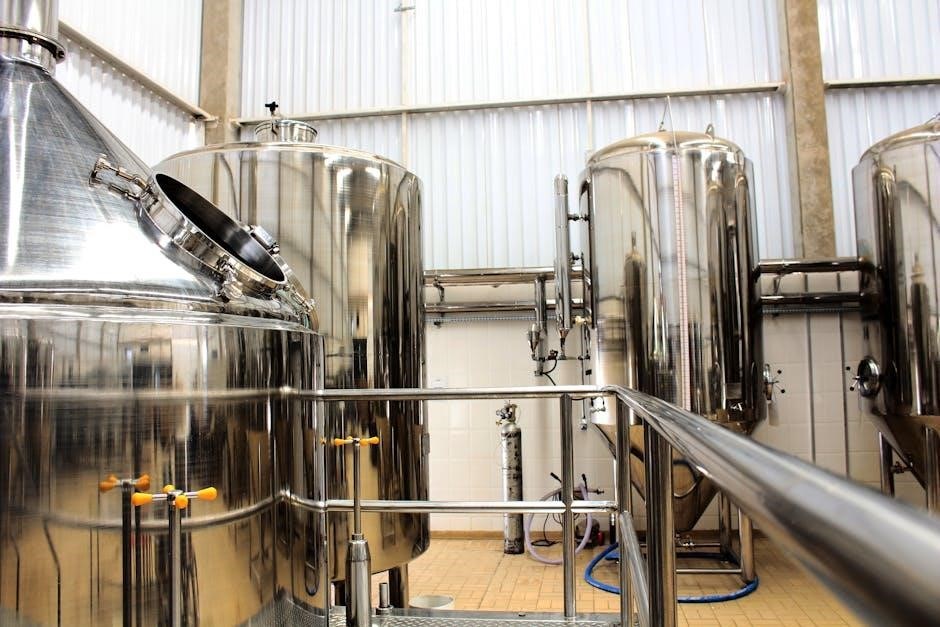
Understanding Pipe Schedules
Stainless steel pipe schedules define wall thickness, impacting strength and flow capacity. Common schedules like 10S, 40S, and 80S are standardized for precise engineering applications and installations.
3.1 Common Pipe Schedules (10S, 40S, 80S)
The most frequently used stainless steel pipe schedules are 10S, 40S, and 80S. These schedules vary in wall thickness, with 10S being the thinnest and 80S the thickest. The 40S schedule is a standard for many applications due to its balance between strength and cost. These schedules are widely available and are specified in charts that detail their exact dimensions, weights, and pressure ratings, making them suitable for diverse industrial and plumbing systems.
3.2 Differences Between Carbon Steel and Stainless Steel Schedules
Carbon steel and stainless steel pipe schedules differ in material properties and applications. Stainless steel offers superior corrosion resistance due to its chromium content, making it ideal for harsh environments. Carbon steel, while stronger and more affordable, corrodes more easily. Both follow ANSI standards (B36.10 for carbon, B36.19 for stainless), but their dimensions and wall thicknesses vary slightly. Stainless steel is lighter and often used in food and chemical industries, whereas carbon steel is preferred for high-pressure and high-temperature applications.
3.3 How to Read a Pipe Schedule Chart
Reading a pipe schedule chart involves understanding key dimensions and ratings. Start by identifying the nominal pipe size (NPS) and schedule number, which indicates wall thickness. Locate the corresponding row and column to find the outside diameter (OD), inside diameter (ID), and wall thickness. The chart also provides the pipe’s weight per unit length. For stainless steel, refer to ANSI B36.19 standards. Ensure the schedule matches the required pressure and corrosion resistance for your application. Always cross-reference with material specifications for accuracy.

Technical Specifications
Stainless steel pipe schedule charts adhere to ANSI B36.19 and ASTM A312 standards, detailing dimensions, tolerances, and material grades. They ensure compliance with engineering and installation requirements.
4.1 ANSI B36.19 Standard for Stainless Steel Pipes
ANSI B36.19 provides comprehensive specifications for stainless steel pipes, covering dimensions, tolerances, and wall thicknesses. It ensures uniformity in manufacturing and quality, making it a critical reference for engineers and fabricators. The standard includes data on nominal pipe sizes, outside diameters, and schedules, ensuring pipes meet precise industry requirements. It is widely used in various industries, including food processing, marine, and chemical plants, where high corrosion resistance and durability are essential. Adherence to ANSI B36.19 guarantees reliability and safety in piping systems.
4.2 ASTM A312 and ASME SA312 Specifications
ASTM A312 and ASME SA312 define standards for seamless and welded stainless steel pipes, detailing dimensions, tolerances, and testing methods. These specifications cover austenitic grades like 304/304L and 316/316L, ensuring high-quality pipes for various applications. They outline mechanical properties, such as tensile strength and yield strength, and include requirements for hydrostatic or non-destructive testing. Compliance with these standards ensures pipes meet rigorous quality and performance criteria, making them suitable for demanding environments in industries like food processing, chemical plants, and marine applications.
4.3 Tolerances for Stainless Steel Pipe Dimensions
Tolerances for stainless steel pipe dimensions ensure consistency in manufacturing. They specify acceptable variations in outside diameter, wall thickness, and length. These standards are critical for fitment and performance in piping systems. For example, the outside diameter tolerance for seamless pipes is typically ±1% of nominal size, while wall thickness varies by ±10%. Adhering to these specifications ensures pipes meet quality and reliability expectations, avoiding issues during installation and operation. Proper tolerances are essential for maintaining system integrity.
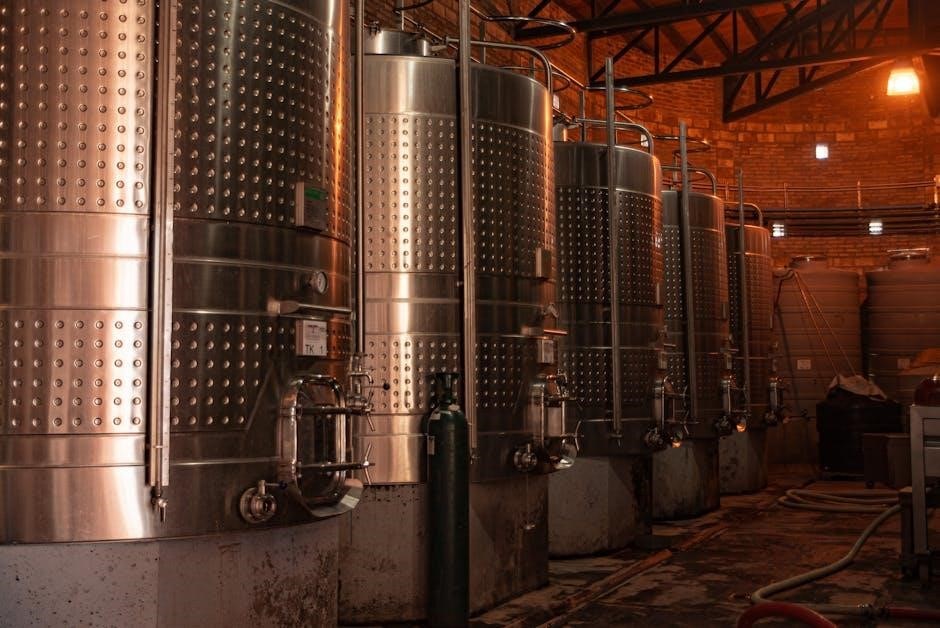
Dimensions and Weight Calculations
Understanding pipe dimensions and weight calculations is crucial for accurate system design. Nominal pipe size, outside diameter, and wall thickness are key factors. Weight per unit length is calculated using material density and cross-sectional area, ensuring compliance with standards like ANSI B36.19. These calculations help in selecting the right pipe for specific applications, ensuring structural integrity and performance.
5.1 Pipe Dimensions in Inches and Millimeters
Pipe dimensions are critically important for system design and compatibility. Stainless steel pipe schedule charts provide precise measurements in both inches and millimeters, including nominal pipe size, outside diameter, and wall thickness. These dimensions are standardized according to ANSI B36.19, ensuring consistency across manufacturers. For example, a 1-inch pipe has an outside diameter of 1.315 inches (33.4 mm) in Schedule 40S. Charts also include conversion factors for unit measurement, facilitating global engineering projects. Accurate dimension specifications ensure proper fitment and performance in industrial applications.
5.2 Calculating Pipe Weight Using Schedule Charts
Calculating pipe weight is simplified using schedule charts, which provide dimensions and material specifications. The weight per unit length is determined by the wall thickness, outside diameter, and material grade. For stainless steel pipes, the formula incorporates the nominal size, schedule number, and density of the material. Charts often list weights in kilograms per meter or pounds per foot, ensuring accurate calculations for engineering and procurement needs. This data is crucial for budgeting and structural planning in industrial applications.
5.3 Conversion Factors for Different Units
Conversion factors are essential for translating measurements between metric and imperial systems. Common conversions include millimeters to inches for diameter and kilograms to pounds for weight. Schedule charts often include these factors to facilitate global compatibility. For example, 1 inch equals 25.4 millimeters, and 1 kilogram per meter is approximately 0.068 pounds per foot. These conversion tools ensure consistency and accuracy when comparing or adapting designs across regions, making them indispensable for engineers and manufacturers working with stainless steel pipes.

Applications of Stainless Steel Pipes
Stainless steel pipes are widely used in food processing, chemical plants, marine environments, HVAC systems, and plumbing due to their durability, corrosion resistance, and hygienic properties.
6.1 Food and Beverage Industry
In the food and beverage industry, stainless steel pipes are extensively used for their resistance to corrosion and ability to maintain hygiene. Their smooth surfaces prevent bacterial growth, ensuring safe processing of edible products. Applications include dairy plants, breweries, and food processing units. The schedule charts help in selecting pipes with appropriate wall thickness and diameter to handle high-pressure and temperature conditions, while adhering to industry standards like ASTM A312 and ASME SA312. This ensures reliable performance in demanding environments.
6.2 Chemical and Petrochemical Plants
In chemical and petrochemical plants, stainless steel pipes are crucial due to their high corrosion resistance and durability in harsh environments. They withstand aggressive chemicals and extreme temperatures, ensuring reliable service in processing units. The schedule charts provide precise dimensions and wall thicknesses, enabling engineers to select pipes that meet the stringent requirements of these industries. Compliance with standards like ANSI B36.19 ensures predictable performance, making stainless steel pipes a preferred choice for critical applications in these sectors.
6.3 Marine and Coastal Applications
In marine and coastal environments, stainless steel pipes are indispensable due to their superior corrosion resistance against seawater and salt-laden air. The schedule charts provide essential details for selecting pipes that can withstand these corrosive conditions. Their durability ensures long-term reliability in offshore platforms, desalination plants, and shipbuilding. Compliance with ASTM A312 and ASME SA312 standards guarantees high performance, making stainless steel pipes a preferred choice for marine applications.
6.4 HVAC and Plumbing Systems
Stainless steel pipes are widely used in HVAC and plumbing systems due to their resistance to corrosion and ability to handle high temperatures. The schedule charts help in selecting pipes with appropriate dimensions and wall thicknesses for efficient fluid flow. Their durability ensures long-term performance, making them ideal for condenser water systems and steam distribution. Compliance with ANSI B36.19 standards ensures compatibility and reliability in these applications, reducing maintenance and extending system lifespan.

How to Choose the Right Pipe Schedule
Selecting the right pipe schedule involves considering pressure, temperature, and corrosion resistance. Refer to the schedule chart to ensure the pipe’s dimensions and wall thickness meet application requirements, ensuring durability and compliance.
7.1 Factors Influencing Pipe Schedule Selection
Selecting the appropriate pipe schedule depends on several factors, including pressure rating, temperature, corrosion resistance, and application type. The pipe’s wall thickness must be sufficient to handle the system’s pressure and flow requirements. Environmental conditions, such as exposure to chemicals or seawater, also play a role. Additionally, cost and availability of the pipe schedule are critical considerations. Referencing a stainless steel pipe schedule chart ensures the selected pipe meets all specifications for durability and performance in the intended use.
7;2 Pressure and Temperature Ratings
Pressure and temperature ratings are critical factors in selecting the appropriate pipe schedule. Stainless steel pipes, as per ANSI B36.19, are rated for specific pressure and temperature limits based on their wall thickness. Higher schedules (e.g., 80S) offer greater strength to handle higher pressures and extreme temperatures. The pipe schedule chart provides detailed ratings, ensuring the selected pipe meets the system’s operational demands while maintaining safety and durability. Material grade and environmental conditions also influence these ratings, making them essential for reliable performance.
7.3 Corrosion Resistance and Material Grade
Corrosion resistance and material grade are key considerations when selecting stainless steel pipes. The schedule chart highlights different grades, such as 304, 316, and duplex, each offering varying levels of corrosion resistance. Higher-grade materials, like 316, are more resistant to harsh environments, including marine and chemical applications. The chart helps engineers choose the most suitable grade based on the application’s exposure to corrosive substances, ensuring long-term durability and performance without compromising safety or efficiency.
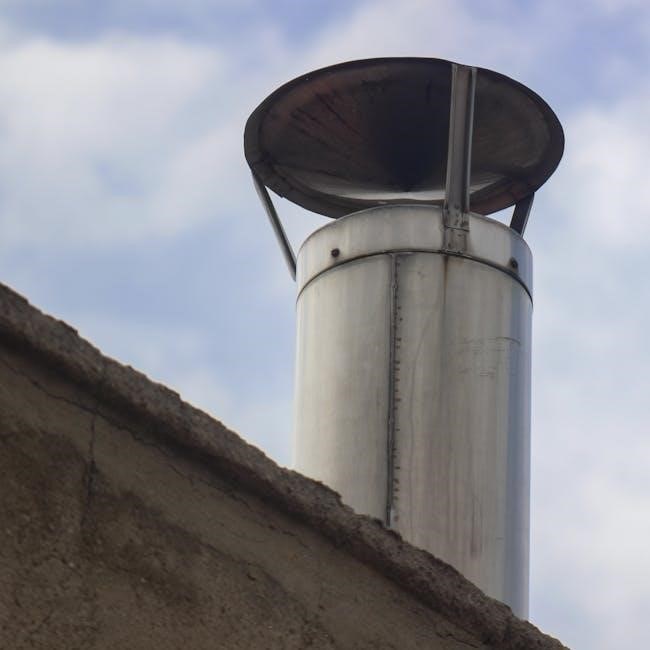
Manufacturing and Tolerances
Stainless steel pipes are manufactured as seamless or welded, with tolerances for wall thickness, diameter, and surface finish. Seamless pipes are formed without welds, offering superior strength, while welded pipes are cost-effective and suitable for less demanding applications; Manufacturing tolerances are critical to ensure pipes meet specifications, with standards like ASTM A312 and ASME B36.19 defining acceptable ranges. These standards also cover material quality, ensuring pipes meet grade-specific requirements for corrosion resistance and durability.
8.1 Seamless vs. Welded Stainless Steel Pipes
Seamless stainless steel pipes are produced without welds, offering greater strength and durability, while welded pipes are made from sheets or coils joined by welding. Seamless pipes are ideal for high-pressure and high-temperature applications due to their uniform structure and lack of weld defects. Welded pipes, though less expensive, are suitable for lower-pressure environments. Both types are covered in schedule charts, detailing their dimensions, wall thickness, and weight. The choice between them depends on application requirements, with seamless pipes preferred for critical systems and welded pipes for general use.
8.2 Manufacturing Tolerances for Wall Thickness
Wall thickness tolerances in stainless steel pipes are critical for maintaining consistency and quality. These tolerances are specified in standards like ASTM A312 and ASME SA312, ensuring pipes meet designated schedules. The allowable deviation in wall thickness is typically a percentage of the nominal value, varying by pipe size and schedule. Tighter tolerances are often required for seamless pipes compared to welded ones; Adherence to these standards ensures reliability, safety, and optimal performance in various applications, making tolerance control a key aspect of pipe manufacturing.
8.3 Surface Finish and Quality Standards
Surface finish and quality standards are essential for stainless steel pipes to ensure durability and resistance to corrosion. The finish is typically specified as mill finish, polished, or buffed, with standards outlined in ASTM A312. High-quality pipes undergo rigorous testing, including ultrasonic and hydrostatic inspections. Documentation, such as mill test reports, accompanies each batch, verifying compliance with specifications. Consistent surface quality and adherence to these standards are vital for maintaining structural integrity and meeting application requirements across industries.
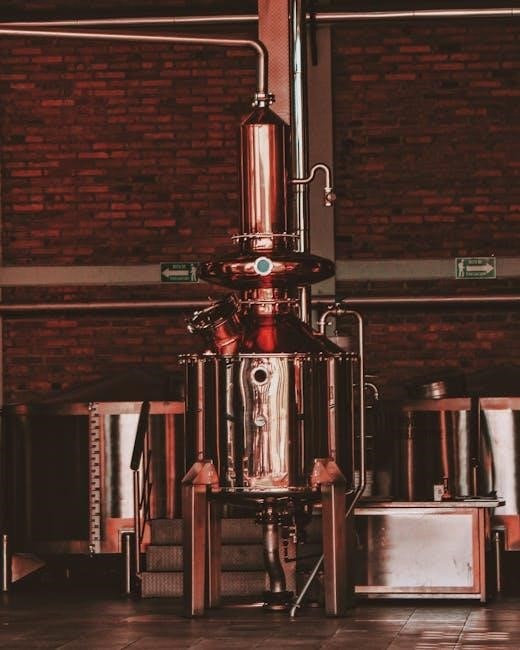
Comparing Stainless Steel and Carbon Steel Pipes
Stainless steel pipes offer superior corrosion resistance and durability compared to carbon steel, making them ideal for harsh environments. While carbon steel is stronger and more affordable, it lacks the corrosion-resistant properties of stainless steel, requiring additional coatings for protection. The choice depends on the application, budget, and environmental conditions.
9.1 Differences in Material Properties
Stainless steel contains chromium (minimum 10.5%), making it corrosion-resistant, while carbon steel lacks this property. Stainless steel offers higher ductility and resistance to heat, making it suitable for high-temperature applications. Carbon steel, though stronger in tensile strength, corrodes faster without protective coatings. Stainless steel is non-magnetic and has lower thermal conductivity compared to carbon steel, which is often magnetic. These material differences significantly influence their industrial applications and suitability for specific environments.
9.2 Corrosion Resistance Comparison
Stainless steel pipes excel in corrosion resistance due to their chromium content (minimum 10.5%), creating a protective oxide layer. Carbon steel, lacking this property, corrodes easily in moist environments. Stainless steel is ideal for marine, chemical, and acidic settings, while carbon steel requires coatings or treatments for protection. Specific stainless grades, like 304 and 316, offer enhanced resistance in harsh conditions. This makes stainless steel a superior choice for durability and longevity in corrosive environments compared to carbon steel.
9.3 Cost and Weight Differences
Stainless steel pipes are generally more expensive than carbon steel pipes due to the higher cost of raw materials and manufacturing processes. However, stainless steel is significantly lighter, offering a higher strength-to-weight ratio. Carbon steel, while cheaper, is heavier and requires additional coatings or treatments for corrosion protection; The weight difference is notable, with stainless steel pipes often being 10-20% lighter than their carbon steel counterparts. This makes stainless steel a more cost-effective option in the long run for applications requiring durability and low maintenance, despite the initial higher cost.
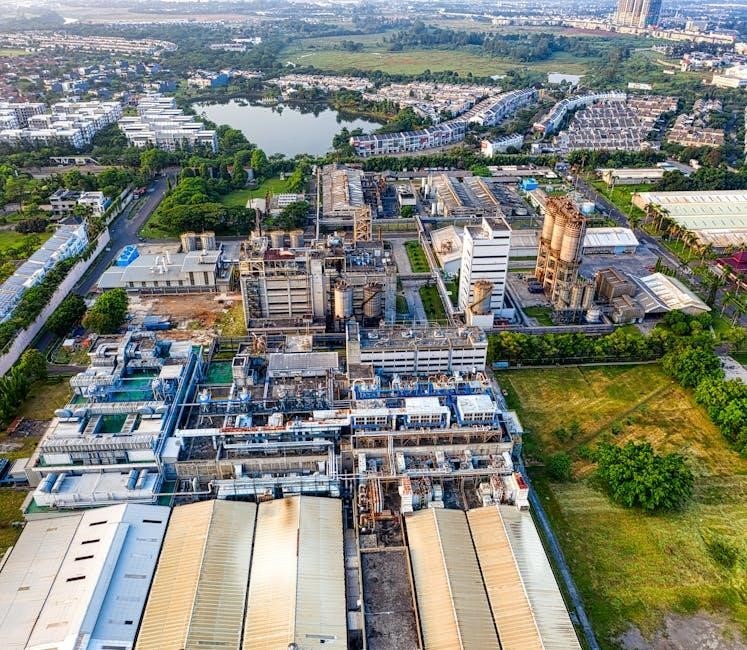
Downloading and Using Stainless Steel Pipe Schedule Charts
Downloading stainless steel pipe schedule charts is straightforward, with reliable PDFs available from trusted sources like ANSI B36.19 and ASTM A312. Digital charts offer enhanced accuracy and convenience, enabling quick lookup of dimensions, wall thicknesses, and weights. They are essential tools for engineers and fabricators, ensuring precise specifications and compliance with industry standards. Using these charts simplifies project planning and execution, making them indispensable for professionals in the field.
10.1 Where to Find Reliable PDF Charts
Reliable stainless steel pipe schedule charts in PDF format can be found on trusted websites like JPSteel, Trilok Steel, and Octal Steel. These sources provide comprehensive charts adhering to standards like ANSI B36.19 and ASTM A312. The PDFs include detailed tables with nominal pipe sizes, wall thicknesses, and weights in both inches and millimeters. They are free to download and often come with guides for easy interpretation. These charts are indispensable for engineers and fabricators, ensuring accurate project planning and compliance with industry specifications.
10.2 How to Interpret the Chart for Your Needs
Interpreting a stainless steel pipe schedule chart involves identifying your project’s specific requirements. Start by determining the nominal pipe size and schedule number, which indicate wall thickness. Refer to the chart to find the corresponding outside diameter and inside diameter. Check the weight per unit length to ensure it meets your design needs. Additionally, verify the material grade and corrosion resistance to suit your application. By matching these details, you can select the appropriate pipe for your system, ensuring optimal performance and durability.
10.3 Benefits of Using Digital Charts
Digital stainless steel pipe schedule charts offer enhanced convenience and accuracy. They provide instant access to detailed dimensions, weights, and specifications, streamlining project planning. Digital charts are searchable and sortable, allowing quick identification of specific pipe sizes and schedules. Regular updates ensure compliance with the latest standards, reducing errors. Additionally, digital charts are environmentally friendly and cost-effective, eliminating the need for physical storage. They are indispensable tools for engineers and professionals seeking efficient and precise pipe selection.
The stainless steel pipe schedule chart is an essential tool for precise pipe selection, ensuring compliance with industry standards and material specifications. It provides accurate dimensions, weights, and schedule designations, guiding engineers and professionals in making informed decisions for various applications. Referencing these charts ensures reliable and efficient piping system designs.
11.1 Summary of Key Points
The stainless steel pipe schedule chart is a critical reference for engineers and professionals, providing detailed pipe dimensions, weights, and material specifications. It outlines nominal pipe sizes, wall thicknesses, and schedule numbers, ensuring compliance with standards like ANSI B36.19 and ASTM A312. The chart helps in selecting the appropriate pipe for various applications, considering factors like pressure, temperature, and corrosion resistance; By offering accurate and comprehensive data, it simplifies the design and installation of piping systems, ensuring reliability and efficiency in industrial and commercial projects.
11.2 Importance of Referencing the Schedule Chart
Referencing a stainless steel pipe schedule chart is essential for ensuring accurate pipe selection, installation, and compliance with industry standards. It provides critical data on dimensions, wall thicknesses, and weights, which are vital for safety and performance in demanding environments. Proper use of the chart helps avoid installation errors, reduces maintenance costs, and ensures system reliability. By adhering to the specifications outlined, professionals can optimize their piping systems for longevity and efficiency, making it a foundational tool in engineering and construction projects.
11.3 Final Thoughts on Stainless Steel Pipe Schedules
Stainless steel pipe schedules are fundamental to achieving precision and durability in piping systems. By understanding and applying schedule charts, professionals can streamline project planning, reduce costs, and enhance safety. The charts provide valuable insights into material properties and dimensions, ensuring optimal performance under various conditions. Regularly referencing updated charts and standards is crucial for staying compliant and delivering high-quality outcomes. This resource remains indispensable for engineers and contractors, fostering efficiency and reliability in modern piping systems.
